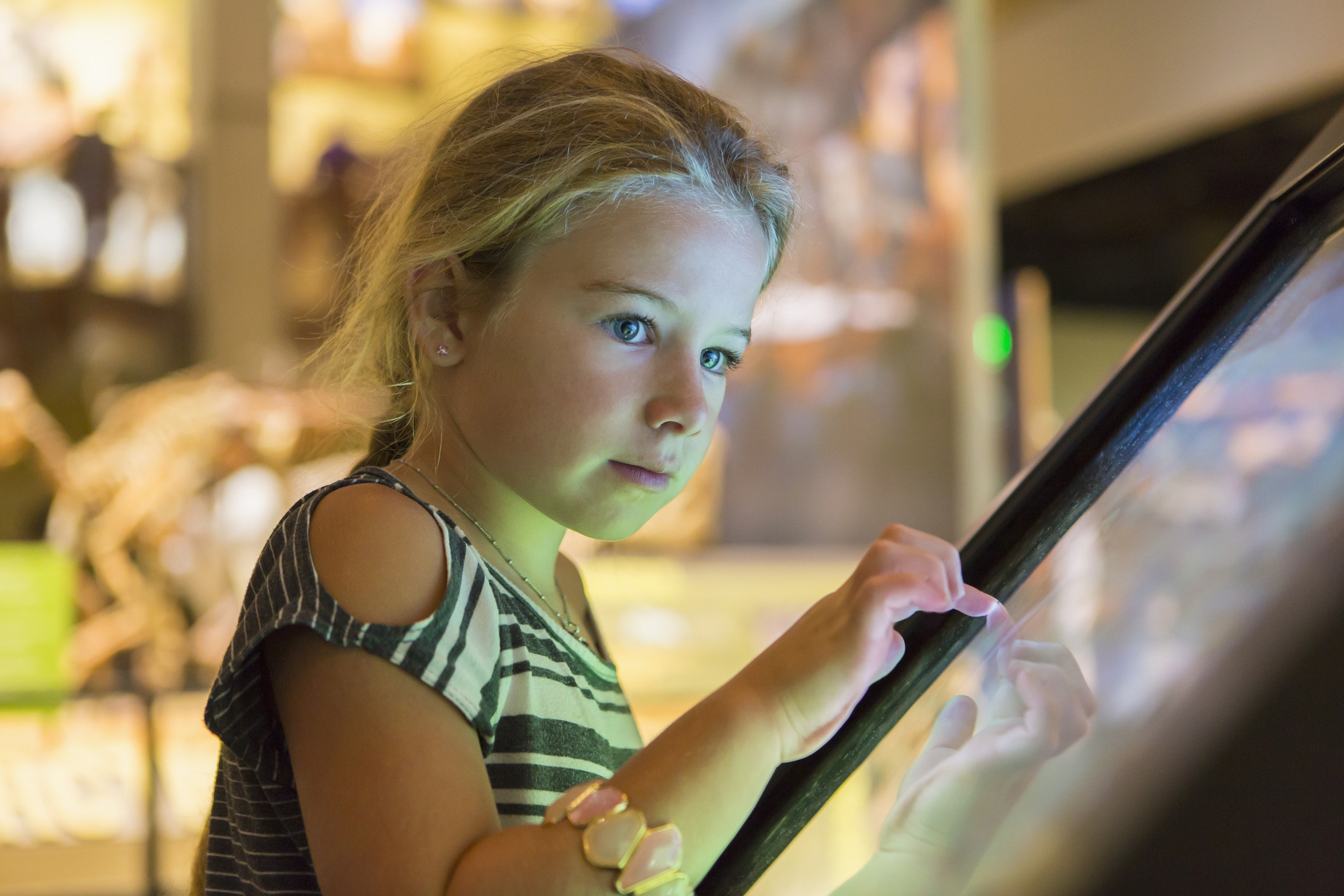One thing I am most looking forward to in 2021 is seeing museums reopen to the public. For me, there is nothing better than spending the afternoon with my family at a museum, and we have some incredible ones in the Los Angeles area where I reside. Some of the best museums are ones that engage, educate, and enrich their visitors through actively learning and interaction. I’ve had the chance to work with CIOs and CTOs from museums who help align visitor engagement, education, and enrichment through creative content and digital signage strategies. Here are some areas of concentration AV professionals should focus on.
Ticketing/Lobby
Visitors entering museums need stream-lined ticketing options. Digital signage software that offers visitors an easy way to pay through kiosks speeds visitors along their way. Another crucial part of the initial visitor experience is leading them into the lobby area. Digital signage video walls can welcome visitors and showcase exhibits and events going on throughout their day.
Additionally, wayfinding systems are needed to show patrons how to access various pavilions and galleries. Outlining the patrons’ flow through the museum is even more essential now with social distancing guidelines.
Gift Shop/Dining Experiences
Many facilities use simple flat panel displays to highlight dining options, promote gift items, collectibles, and memorabilia in their gift shops. Digital menu boards are the best route for quick-serve restaurants (QSRs) in museums. There are a plethora of options for prescheduling content for specific days/times, and many have templates that help create the perfect design.
Donor Walls/Membership
Museums thrive on strong donor and membership programs. I’ve noted several museums using video walls, and projection to highlight their donors and to spur corporate advertising. This is also an area that will need to be updated often, so consider digital signage software that is secure and reliable to engage patrons.
Exhibits
Creating exhibits and interactives that engage patrons of all age ranges and knowledge bases can be complex. How do you engage all patrons on their level? Some say by delivering content suitable for their age and knowledge, and others would say be creating an experience that ignites all the senses.
Many museums use augmented reality (AR) software that immerses visitors and brings people into a whole new world when they interact. Patrons can use AR through their smart phones, glasses, or via touchscreen displays. Museums utilize this technology to really bring their content to life, and help patrons connect to new scenes through video, text, 3D imagery, and spatial audio soundscapes. This connection is what really enhances the visitor experience. Many technologists consider rooms to be infinite pixel canvases that allow for our wildest imaginations to flourish. Some of the most memorable museum experiences are ones that use digital signage technology to tell the story and connect patrons to eras of long ago.
Conference/Reception Areas
Many museums have conference and reception areas for large gatherings. In these venues lighting, audio, and visuals can play a critical role in creating ambiance. These areas could be used as conference centers, banquet facilities, or meeting rooms. Regardless, they are typically outfitted with modular systems that can be easily and quickly scaled depending on the size of the event. We often see projection screens or mobile video walls here. Live events require audio and lighting elements as well that can deliver quality sound and set the tone of the room.
The Future of Digital Signage and Museums
As visitors begin to re-enter museums again, providing digital signage solutions that will delight patrons while keeping them safe will be important. In this ever-changing environment, the future might feel uncertain, but you can bet that AV professionals and technology will help define the future of museums.

